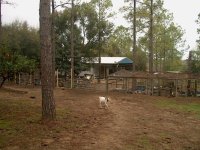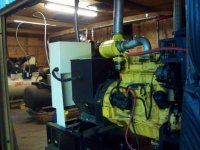Shooter, your hard-wired version would be simpler and cheaper. Maybe if DEFM is more familar with wiring than with PLCs, he would prefer this hard-wired solution.
With a hard-wired solution, it might not be as easy to change the group of equipment to be start-blocked. With a PLC program, adding or removing motors from the critical list would be a quick software change, not a wiring change. As I said, "if I had a machine shop" that had the problem, I would use a PLC. With a cheap operator touch panel to go along with the PLC, the motors to be blocked could even be selected from a menu list.
Thinking some more, given an off-grid limited power supply, and an owner not proficient in PLC programming, a better solution might be a wiring scheme that used selector switches (activated by a generator current switch) to select which motors are start-blocked during a gernerator overload. That might be the best of all methods. To make some wiring schematics would require more information about the system, the generator capacity, the voltage levels, the shop equipment list with the current requirement for each piece, and an order of load shedding for the group of motors to be blocked.
The problem with many methods is that the manufacturer's control circuit for each machine would have to be modified, and that could void some warranties. To do the job without changing existing equipment would require an external contactor for each CNC machine.







